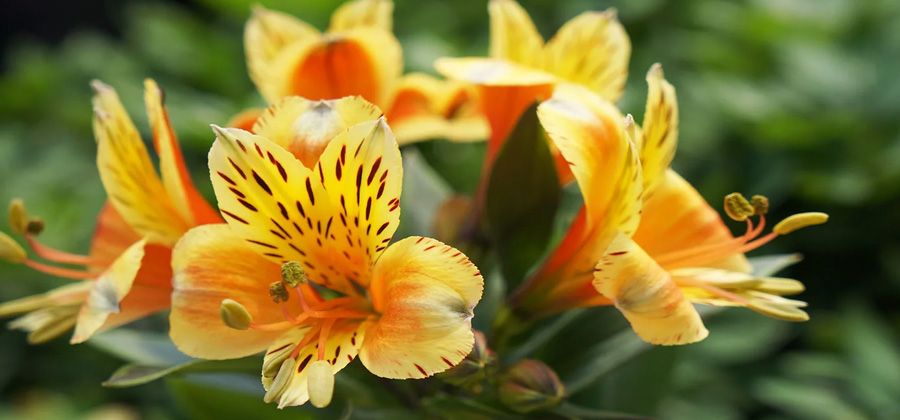Are you looking to add a new variety of flower to your home or garden? Alstroemerias are a perfect choice — they’re very versatile, can grow in many locations and come in a wide range of striking colors.
If you’re new to gardening or are a first-time Alstroemeria owner, learning how to properly care for your plant doesn’t have to be complicated. This Alstroemeria care guide has all the information you need in order to successfully plant, grow and care for your newest addition.
Alstroemeria Overview
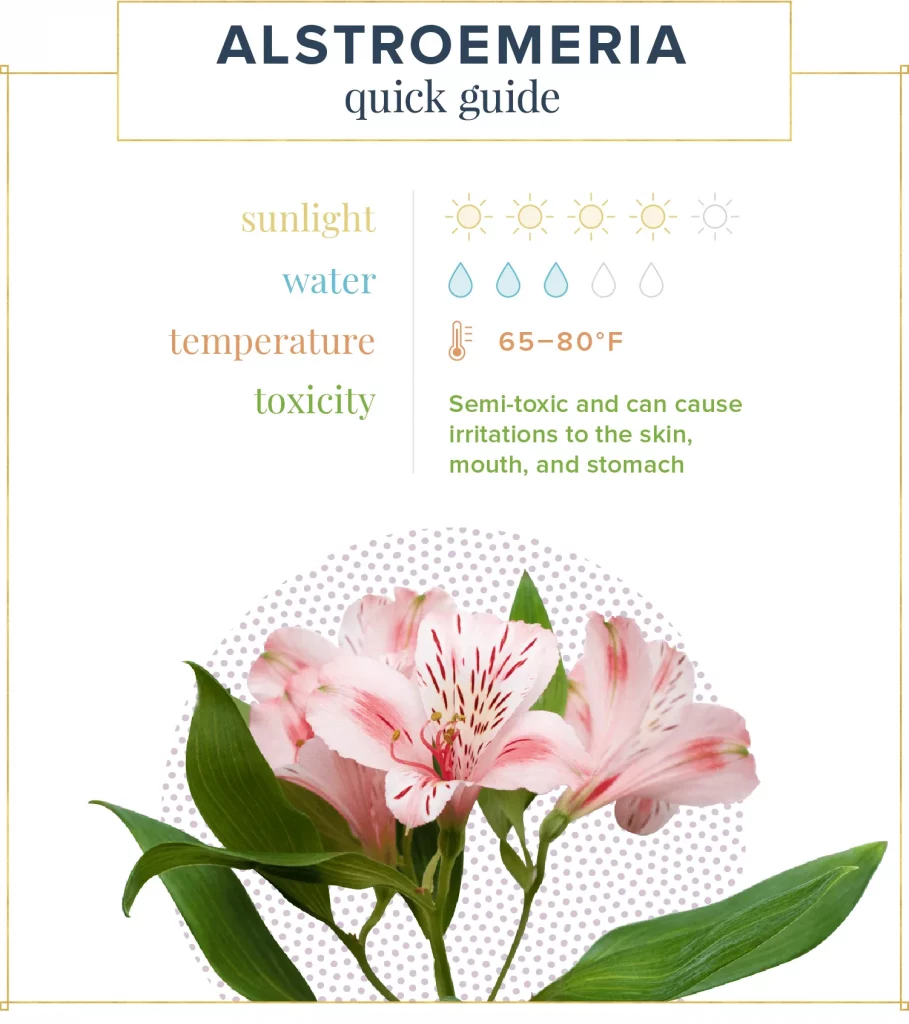
Alstroemeria is a tuberous perennial plant native to South America, especially in Chile and Brazil. Also known as the “Lily of the Incas” or “Peruvian Lily,” these flowers bloom in early summer and can last throughout the fall depending on the variety. This plant produces lily-like flowers with strong stems that grow in a bush up to two to three feet tall. Alstroemeria thrives in warmer weather (zones 7-10).
A member of the Alstroemeriaceae family, this flower is named after Claus von Alstromer, a Swedish baron who introduced this species to Europe in the 1700s. Since then, this plant has become a popular florist flower throughout the world. Additionally, these lilies symbolize devotion, commitment and friendship, so they are sent for many occasions and to many recipients — great as anniversary flowers or just because.
Types of Alstroemeria Flowers
here are over 120 species of Alstroemeria flowers showcasing a variety of colors such as yellow, orange, red, white, pink and purple. Alstroemerias are known for their five to seven long stamens as well as their distinct speckled throats and contrasting color patterns — making striking additions to mixed bouquets. If you’re not sure what Alstroemeria variety to choose, explore six types of Alstroemeria flowers.
Bali
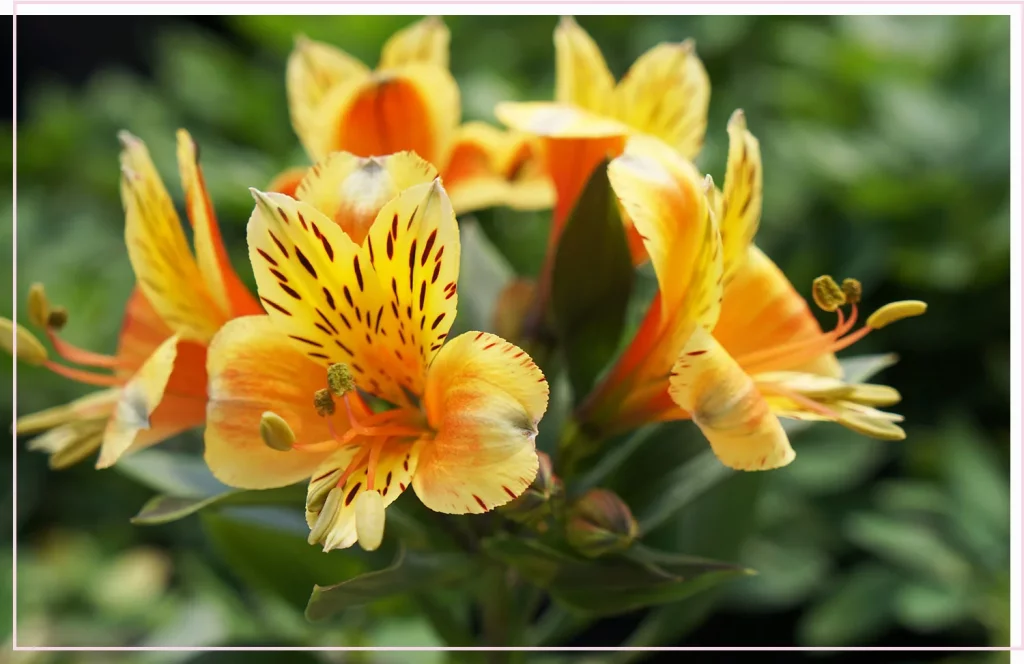
Alstroemeria Bali blooms with golden-apricot flowers with bold streaks of red and mahogany. The bright colors allow them to blend well with other summer flowers. This is a densely branched plant with dark green leaves. Since this variety grows shorter (32 inches) than other alstroemerias, they’re the perfect fit for smaller gardens or if you want to plant them in a pot.
Candy
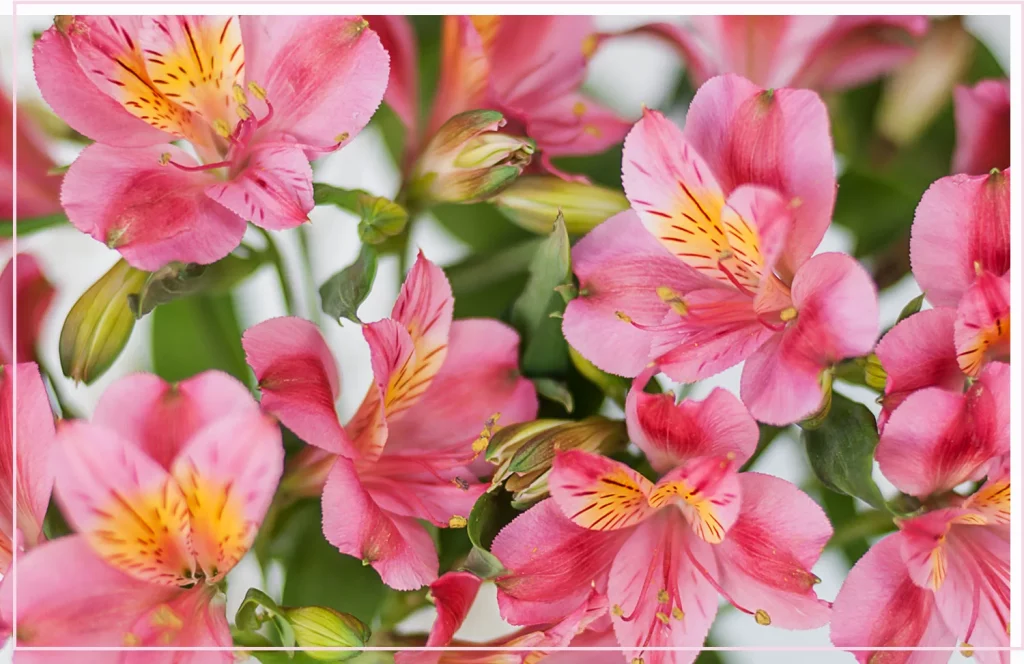
Much like its name, the Candy variety of the Alstroemeria showcases candy-pink flowers. This variety is taller than other Alstroemeria flowers, reaching up to 3 feet in height. Because of its height, it’s ideal for first-time growers since they’re more sturdy.
Fougere
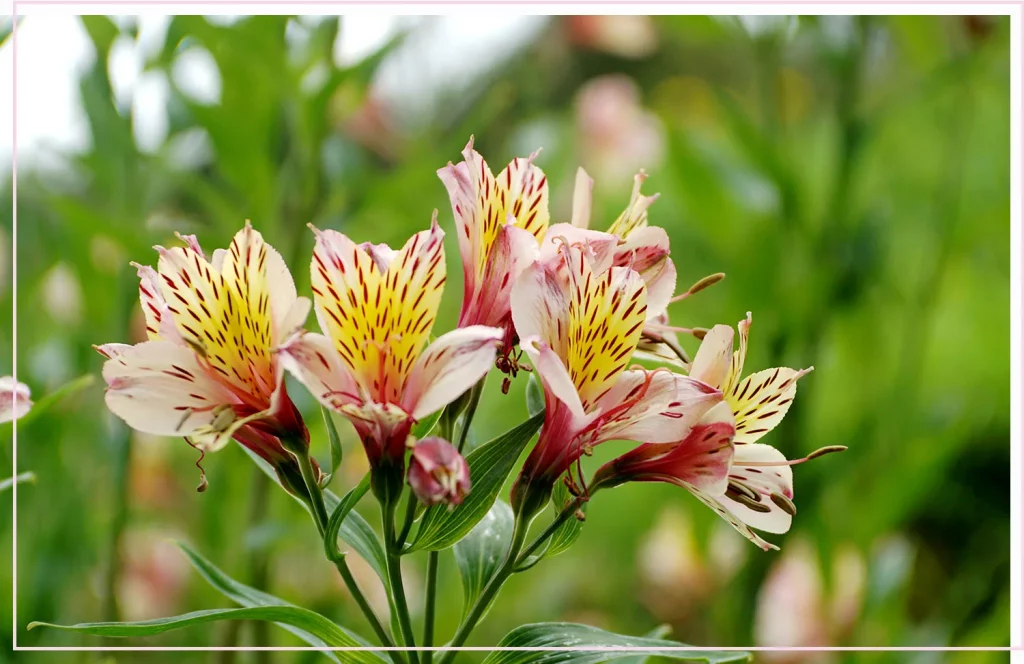
The Fougere is a white Alstroemeria variety with pink and white accents. It can grow up to 28 inches tall and is great for small gardens. Be sure to keep this variety away from your skin as it can cause minor irritations.
Inca Ice
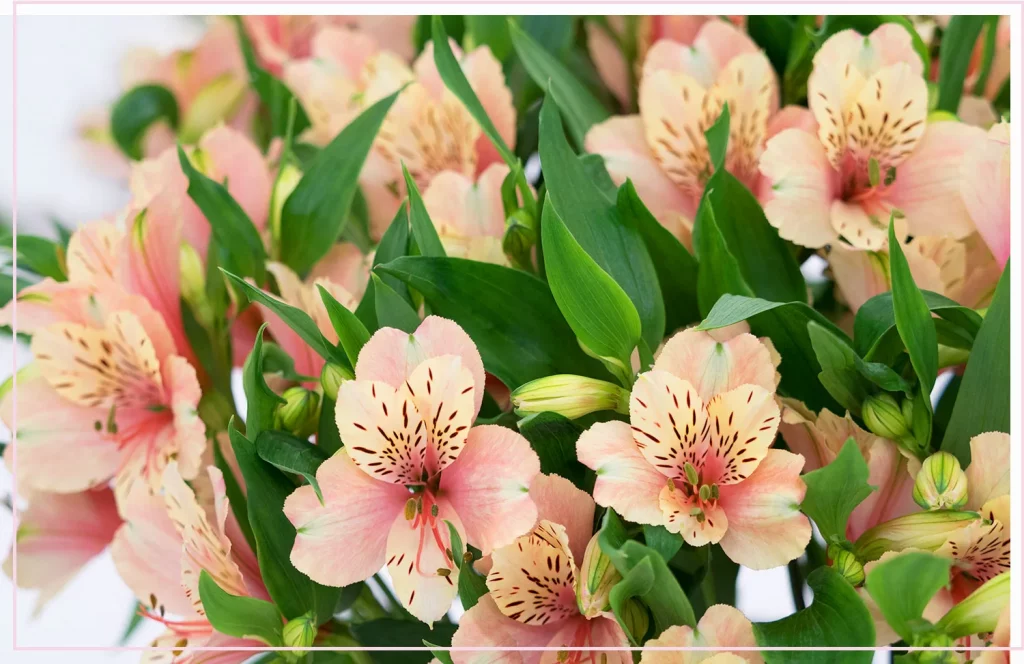
Inca Ice is a variety that can grow up to three feet in height. The petals feature either creamy yellow or apricot colors highlighted with burgundy streaks inside. Since this type has more slender leaves, it becomes an ideal border plant for a garden. Inca Ice is one of the few that do best with mulching in the winter months.
Indian Summer
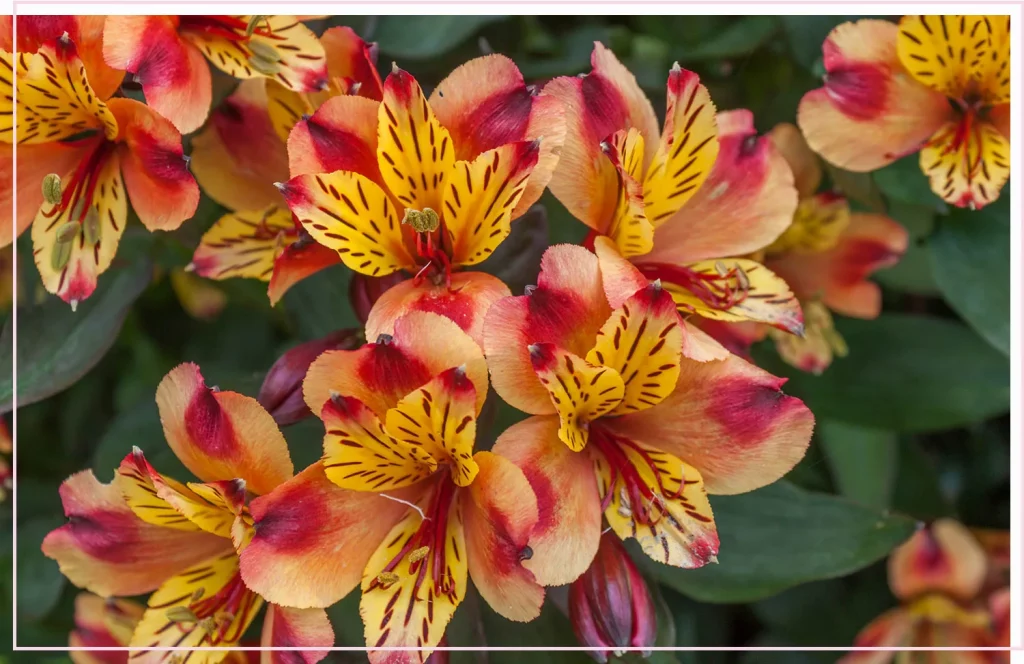
Indian Summer is a striking variety that comes with bronze-colored leaves. The petals feature bright copper-orange or golden flower petals once bloomed. This plant grows up to over 28 inches tall and is great for attracting butterflies to your garden. Indian Summer does well in full sun or partial shade.
Princess Fabian
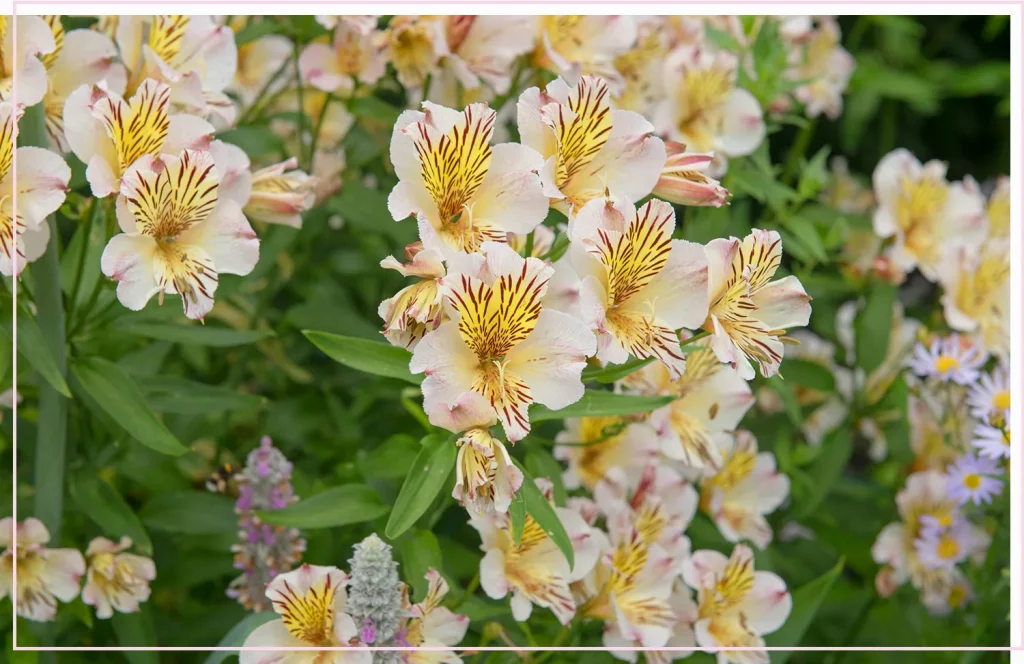
Since the Princess Fabian variety reaches up to one foot in height, they also do well in pots in containers. Its creamy white petals create a base for the light yellow insides of the flower and pop against the dark-green leaves. When planted outdoors, Princess Fabian prefers soil on the moist side and dull sun.
How to Grow Alstroemeria & Tips
Alstroemeria is an easy plant to grow. Here are some plant care tips and tricks to help keep your Alstroemeria at its healthiest.
Sunlight
Sunlight: Alstroemeria flowers should be planted in an area of your garden that is mostly sunny. They thrive when receiving full morning sun and some partial shade in the afternoons.
Water
Water: These plants do best when they’re watered regularly. When first planted, keep the rhizomes (the underground stems) wet until you see the first shoots appear, then one-inch of water every week. After the plant has become more established, it can take less water. Avoid over-watering as this will lead to root rot.
Temperature
Temperature: Autumn and spring are the best times for planting Alstroemeria where the ideal temperature ranges from 65-80°F. As temperatures get gradually warmer nearing the end of spring, greenhouses can help aid in preventing scorched leaves.
Toxicity
Toxicity: The Alstroemeria plant contains the toxin tulipalin, which can be harmful to all animals. Tulipalin is present in the sap of the cut part of the flower and can cause irritation on contact, and a reaction if swallowed. While these plants are considered non-toxic to pets, they can still cause unpleasant reactions to cats and dogs if ingested, such as mouth irritation, vomiting and digestive irritation.
To be safe, wear gloves when handling the Alstroemeria plant to avoid any potential skin irritation and avoid touching your hands and mouth if you do come into contact.

